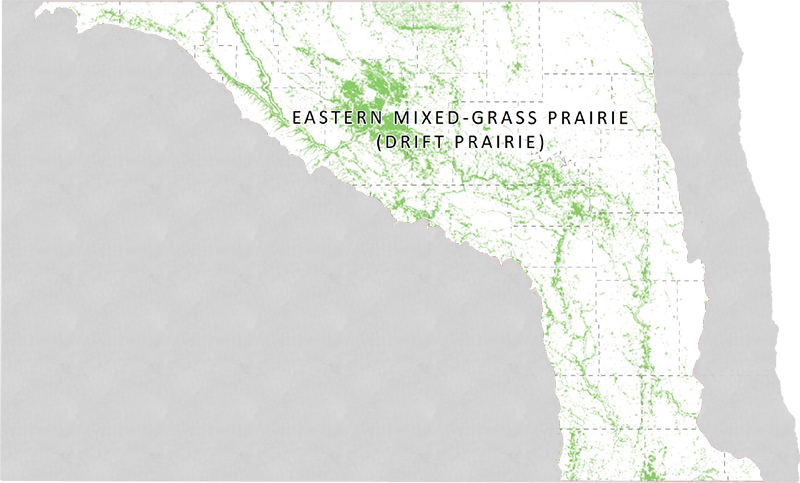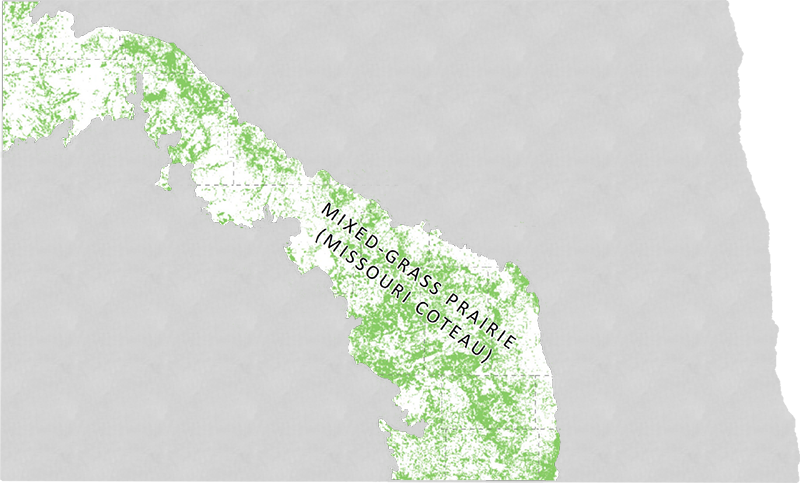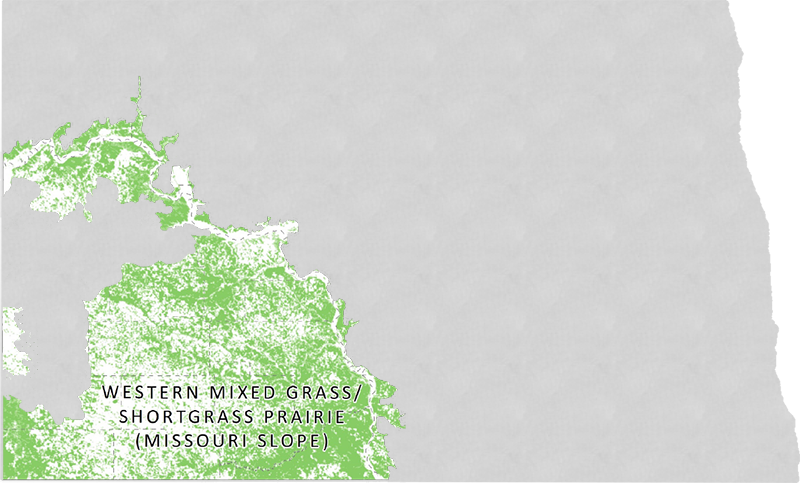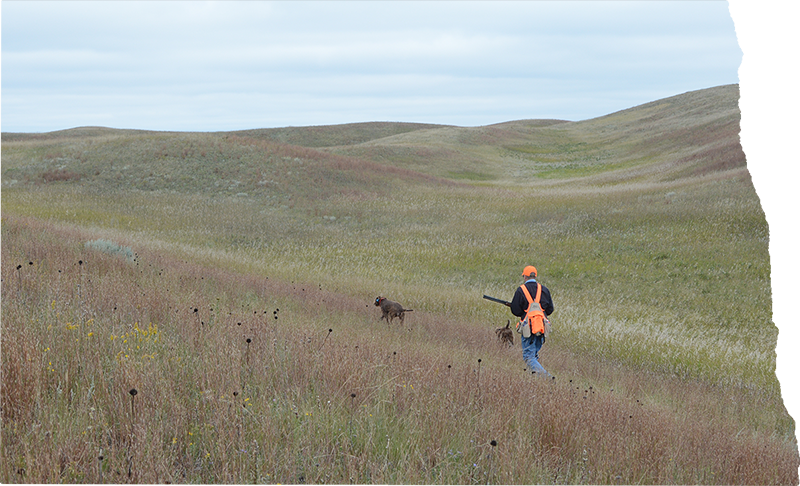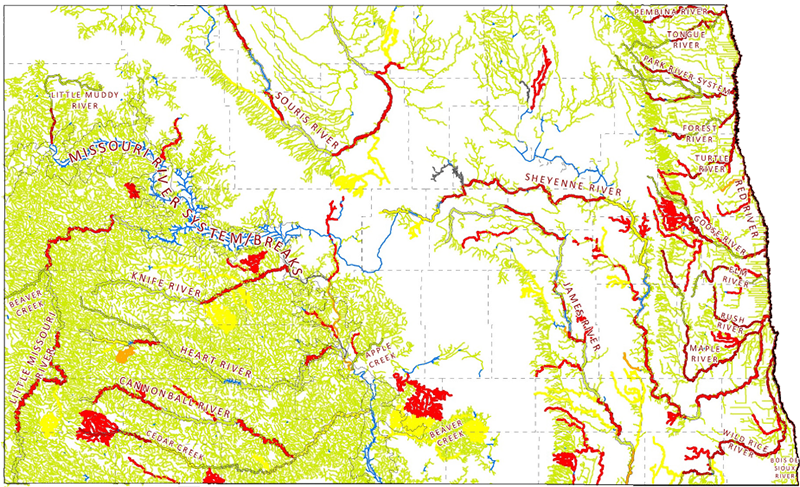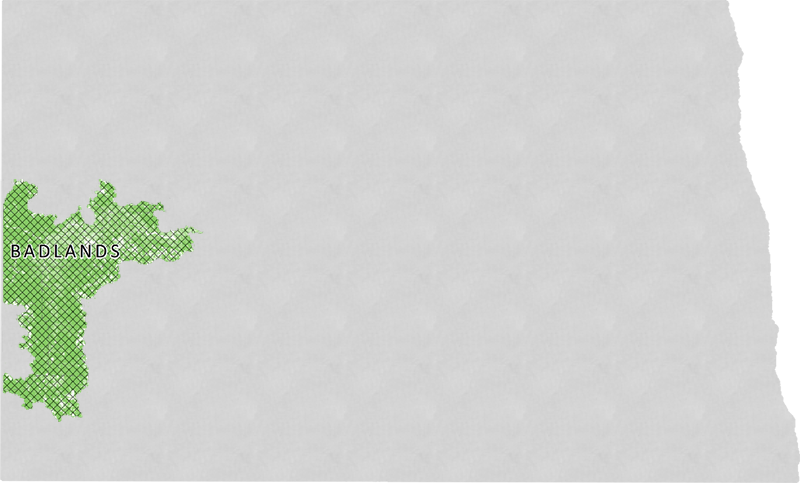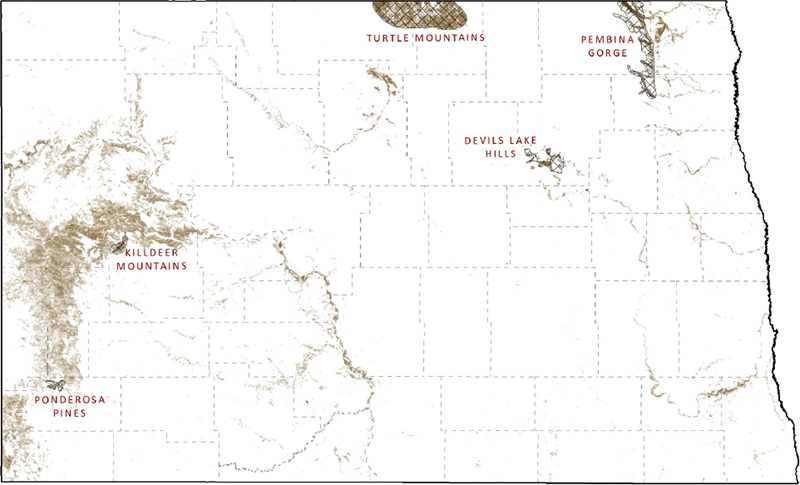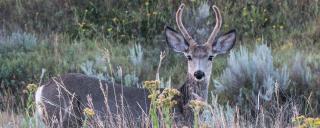
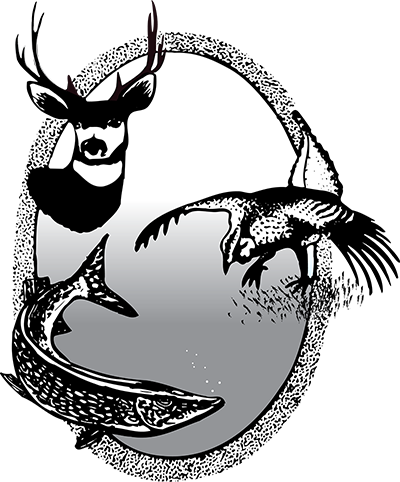
Habitats
Habitat types in North Dakota can be broken down into 9 different categories:
- Tallgrass Prairie
- Eastern Mixed-grass Prairie
- Mixed-grass Prairie
- Western Mixed-grass/Shortgrass Prairie
- Planted or Tame Grassland
- Wetlands and Lakes
- Rivers, Streams and Riparian
- Badlands
- Upland Deciduous Forest
Tallgrass Prairie (Red River Valley): This landscape component consists of the tallgrass prairie, and associated wetlands, historically found predominantly in the eastern one-fourth of North Dakota. More tallgrass...
Eastern Mixed-grass Prairie (Drift Prairie): This landscape component consists of the Eastern mixed-grass prairie, or Drift Prairie, and associated wetlands.
Mixed-grass Prairie (Missouri Coteau): This landscape component includes the mixed-grass prairie of the Missouri Coteau and associated wetlands.
Western Mixed-grass/Short-grass Prairie (Missouri Slope): This landscape component includes the Western mixed-grass prairie and short-grass prairie of the Missouri Slope and associated wetlands.
Planted or Tame Grassland: This landscape component includes prairie that has been converted to cropland and then re-planted to hayland, tame or native grasses.
Wetlands and Lakes: This landscape component includes all wetlands and lakes distributed throughout the state.
Rivers, Streams and Riparian: This landscape component includes all rivers, streams, and associated riparian areas which are distributed throughout the state.
Badlands: This landscape component includes the area associated with the Little Missouri River drainage and is commonly referred to as badlands.
Upland Deciduous Forest: This landscape component includes the larger tracts of native upland deciduous forest which occur scattered throughout the state.


